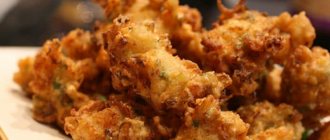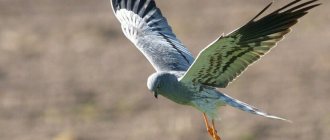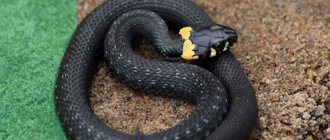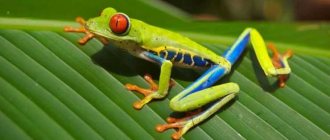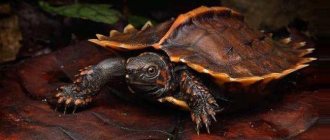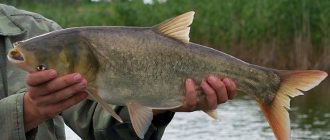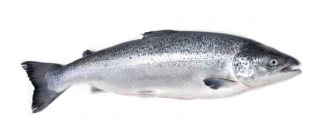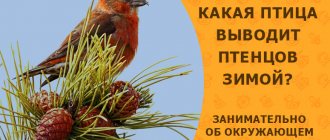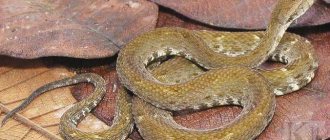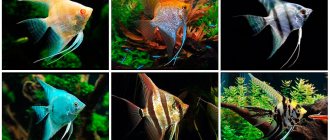Salmon fish are one of the many inhabitants of the Pacific and Atlantic oceans, as well as fresh water bodies of the northern hemisphere. The most common representatives of this family: salmon, salmon, pink salmon, chinook salmon, coho salmon, trout, chum salmon, sockeye salmon, whitefish and so on.
These fish have excellent taste, therefore they are especially valued in cooking: they can be used to prepare both ordinary, everyday dishes and delicacies for the festive table. We must not forget about the tasty and healthy red caviar - it is obtained only from salmon.
The appearance, habitat and behavioral characteristics of fish of this family, as well as the beneficial properties of salmon and fishing for these types of fish will be discussed in this article.
Appearance of fish and distinctive features
Salmon fish is a source of delicious meat.
Salmon fish are a family that includes more than 40 species that differ in size, habitat, feeding habits and many other parameters. Some constantly live in freshwater bodies of water, while others are found in seas and oceans, and return to rivers only to spawn.
The body size, depending on the species, can range from 3-5 cm to 2.5 m. The weight of the largest individuals reaches 70 kg. The body of the fish has an elongated shape. It is covered with small cycloid scales, which easily peel off under mechanical stress.
Pelvic fins contain more than 6 rays. There are no protective spines. On the back there is not only a real fin, but also an adipose fin. The large mouth is bordered by hard pre- and maxillary bones.
The list of features that unite all types of salmon fish includes:
- reproduction only in freshwater bodies of water;
- spotted body coloration;
- the presence of transparent eyelids;
- large caviar;
- good adaptation abilities.
In the photo below you can see what fish belonging to the salmon family look like.
Char
Arctic char is an unusual member of the salmon family. Because of its small scales, its skin appears smooth and bare, which is where it gets its name. Light spots on its body make it possible to recognize salmon from many others.
Char is a storehouse of valuable elements and will appeal to people who care about their figure and adhere to proper nutrition. It can be boiled, smoked, stewed, evaporated or pickled. Regular consumption of food has significant benefits for humans:
- Improving immunity, quality of vision, skin, hair, nails.
- Improving the functioning of the cardiovascular system.
- Normalization of hormones and enzymes.
- Reducing the likelihood of thrombosis and the development of heart attacks and strokes.
- Strengthening blood vessels.
- Restoration of the body after physical activity.
- Reducing the risk of developing cancer.
Yandex picture
It is better to cook char immediately after purchase, this helps preserve its beneficial properties.
Types of salmon and their characteristics
Marine salmon species have the greatest commercial value. They are divided into 2 large genera: Atlantic and Pacific. Each of them has its own behavioral characteristics.
Atlantic
The genus of Atlantic salmon includes only 1 species - salmon. This fish spawns in the clean rivers of the eastern coast of North America, as well as in the reservoirs of Western Europe connected to the White, Barents and White Seas.
Atlantic salmon is found in clean rivers and reservoirs.
In some countries it is listed in the Red Book, because in nature, its population is steadily declining due to poaching. In Norway it is bred in an artificial environment.
Salmon can be both anadromous and lake. Each variety has its own specific features. Thus, it has been established that migratory fish, unlike other salmonids, do not die during spawning. Adult individuals return to the river in which they themselves hatched, on average 3-5 times. They experience transformation both when entering and leaving a freshwater body of water.
Some individuals return to rivers even before the onset of sexual maturity and can remain there for a year until they are ready to breed. In addition, males of this species can remain in spawning areas without going to the Atlantic Ocean to feed. They are smaller than their counterparts, but participate in the fertilization of eggs.
Lake salmon is not as large as migratory salmon, and therefore has less commercial value.
Pacific
The genus of Pacific salmon is more numerous.
It includes the following types:
- Chinook;
- coho salmon;
- pink salmon;
- chum salmon;
- red salmon.
Pacific salmon die after breeding.
Representatives of all these breeds breed in freshwater bodies, but go to the Pacific Ocean to feed. Fish spawn only once. Individuals that have reached sexual maturity return to the rivers to spawn. However, after contact with fresh water, they begin metamorphosis.
They acquire mating colors and stop feeding, using up the fat reserves accumulated during their life in the ocean. After breeding, the fish die.
The nutritional value
Red salmon meat is, first of all, very healthy due to unsaturated fatty acids that help improve memory and slow down age-related processes. This fish contains antioxidants and allows the body to be full:
- vitamins A, D, B, PP;
- phosphorus;
- potassium;
- chrome.
Salmon is offered for sale chilled, frozen, salted, and smoked. They also make preserves and preserves. Salmon is usually offered under the name “pink salmon” - it is more common and affordable.
Subfamilies
Scientists distinguish 3 subfamilies: Salmonidae, Whitefish and Grayling. They were formed under the influence of environmental factors and acquired special structural features of the body.
Salmonidae
Salmonidae is a large subfamily that includes both freshwater and marine species. Their body is covered with small rounded scales.
The list of fish belonging to the salmon subfamily includes:
- salmon;
- trout;
- lenok;
- loach;
- taimen;
- brown trout;
- Dolly Varden;
- neiva;
- American Palia;
- pink salmon;
- chum salmon;
- sima;
- coho salmon;
- Chinook;
- red salmon.
The salmon fish belongs to the salmon subfamily.
These fish differ in size, maximum weight and other parameters.
The most numerous species is pink salmon. It spawns in clean rivers, but spends most of its life in cold ocean waters. The average body length is 50-60 cm, and weight is 1.5-2 kg. The individual reaches sexual maturity at 1.5 years. Males develop a hump.
Another numerous species is chum salmon. This is a large fish - up to 80 cm in length. Weight can reach up to 14 kg. Chum salmon reaches sexual maturity at 3-10 years. It is reared in the waters of the Pacific Ocean. When a fish enters the river to spawn, its mouth takes on the shape of a beak. Black, green and pink spots appear on the skin of males. Chum salmon caviar is quite large – up to 9 mm in diameter.
Sockeye salmon is another representative of the subfamily that is frequently found in nature. It grows up to 80 cm and reaches a weight of 3 kg. The fish meat is bright red in color and has a high fat content. This color is due to the fact that the diet of sockeye salmon includes crustaceans, which contain large quantities of natural pigments - carotenes. Sockeye salmon are fed in the cold waters of the Pacific Ocean. During pre-spawning metamorphosis, the skin and fins of males and females acquire a red tint.
Chinook salmon grow up to 1.5 m in length and gain up to 50 kg of weight. Most of the population enters the rivers of Kamchatka. Chinook salmon reaches sexual maturity at 4-7 years. When males enter spawning, their jaws become bent. The wild Chinook salmon fishery is limited because... The natural population is small.
Lenok is a freshwater representative of the subfamily. It is covered with small scales. The color varies from silver to orange-brown and depends on the characteristics of the reservoir in which this fish is found. Lenok can live not only in rivers, but also in large lakes. The body length of the fish reaches 40-70 cm. The weight of large specimens is 4-8 kg.
Taimen can reach several meters in length.
Taimen is a large freshwater fish that belongs to the salmon subfamily. It reaches 2.5 m in length and weighs about 70 kg. Taimen is found in many clean lakes and rivers of Siberia and Sakhalin. Rare individuals go to sea for a short period of time to feed. The species is listed in the Red Book and its fishing is prohibited.
Trout is characterized by an elongated body shape with a rounded abdomen. The head has a slightly pressed shape. The mouth is wide. Large eyes are located above the upper jaw. The back is covered with dark olive scales, and the sides and belly are light. There are a large number of small black spots on the body. This species is considered predatory. The basis of its diet are small crustaceans, juveniles, tadpoles, insects, etc.
Whitefish
This subfamily includes whitefish, valks, and white fish. They are united by external signs.
The most valuable whitefish include:
- muksun;
- omul;
- peled
- vendace;
- whitefish;
- tugun;
- whitefish;
- outrigger.
Omul is a small fish that is found in the lakes of Siberia.
Muksun lives in freshwater reservoirs of Siberia and desalinated sea bays. It reproduces well in captivity, so it is more often caught in the wild by recreational fishermen. Adults reach a length of 75 cm and weigh 6-8 kg. The color is silver-blue. The scales on the back are darker, and on the belly they are lighter. Wild muksun does not feed on crustaceans rich in carotene, so its fillet is white with a slight pinkish tint.
Omul is a small fish, the body length of which is on average 25-30 cm. The weight of most specimens does not exceed 500 g. However, some individuals can reach 5 kg. The fins have a dark gray tint. Omul is found in many rivers and lakes of Siberia.
Peled lives in lakes and large rivers flowing into the northern seas. At the same time, it avoids running water, so it does not rise close to the sources. The body of the fish is covered with small silver scales. There are black specks on the pectoral, dorsal and caudal fins. Adults reach a length of 50-60 cm and weigh up to 5 kg. The fish fillet is tender and fatty.
Whitefish are found in freshwater bodies of Siberia, the Baltic region, Canada and Alaska. There are several of its subspecies. Body length is from 15 to 60 cm. The weight of adults is from 1 to 12 kg.
The whitefish is a large fish with a high curve from head to back. The body is covered with large silver-blue scales. Adults reach 120 cm in length and gain up to 14 kg of weight. The fins are translucent gray in color. The meat is fatty and tender.
Grayling
This subfamily includes one genus of fish - grayling. The fish is whimsical to environmental conditions. Prefers cold waters. It has an elongated body covered with medium-sized scales. Grayling can be distinguished from other salmon species by its large dorsal fin, which has red and bluish spots.
Grayling fish prefers cold waters.
The coloring of males is brighter than that of females. The pectoral fins and tail are pink. The mouth is quite small, the teeth are located only on the upper jaw. This fish of the salmon family has an adipose fin. The average body length of grayling is 35-45 cm, and weight is 1.5-2 kg.
Omul
Omul is a valuable commercial fish of the salmon family, especially popular in Siberia, has a spindle-shaped head and silvery scales. Its color changes depending on where it lives and eats. There are individuals whose life expectancy is 15-20 years. Its preparation methods are varied: boiling, salting, frying, smoking and even eating freshly frozen. Stroganina is the national way of cooking of the northern peoples and will appeal to every gourmet. Raskolka is a chop made from frozen fish. Sagudai – fillet soaked in a special brine. Ukha, which turns out to be especially rich.
There are several populations inhabiting different parts of Lake Baikal.
- Seleginskaya is the largest living in the Selenga River.
- North Baikal - in the northern part of the reservoir.
- Chivyrkuiskaya - in the eastern part of the lake.
- Posolskaya - in the Small Sea.
- Barguzinskaya - almost destroyed, lives in the Barguzin River.
Omul is a good meat substitute for people with weak stomachs.
Yandex picture
Lifestyle and behavior
The life of all types of salmon fish begins in clean freshwater rivers. The parent stock dies, which leads to the appearance of a large number of small insects and zooplankton in the water. Thus, the fry have a lot of food. How long juveniles stay in rivers depends on whether there is food in them. After the food supply is depleted, most of the newly hatched fish begin to float downstream to get into the seas, and then into the oceans.
Many fish are able to survive to adulthood.
During their first migration, they acquire the ability to live in salt water. In seas and oceans, juveniles gather in large herds for protection from predators. Individuals that have reached sexual maturity return to the rivers to spawn. However, most species of migratory salmon die after spawning.
Basic parameters of salmon representatives
The body length of salmon representatives ranges from very small sizes, just a few centimeters, to two meters. The smallest are whitefish, but salmon, taimen and chinook salmon, being the largest, reach a weight of 70 kilograms.
Typically, the lifespan of these fish is limited to 15 years. But sometimes among them there are real long-livers. For example, taimen was discovered - a salmon fish that lived for more than 50 years and weighed 105 kilograms at the time of capture! And this centenarian surprised everyone with his size: two and a half meters - that was the length of his body!
Diet
Most species of salmon lead an omnivorous or predatory lifestyle.
Their diet includes:
- marine and freshwater worms;
- zooplankton;
- shellfish;
- shrimps;
- small ctenophores and jellyfish;
- juvenile squid;
- fry;
- small fish;
- water insects.
The diet of fish includes mollusks and zooplankton.
The diet varies depending on the time of year and food supply. The fish quickly adapts to existing conditions.
Chinook
This representative of salmonids spawns mainly in the Koryak Highlands, Kamchatka and the Commander Islands. Chinook salmon are one of the largest salmon in the Pacific Ocean and are also the largest freshwater fish of the Northeast. Some individuals reach a weight of sixty kilograms with a body length of almost one and a half meters. The color of the Chinook salmon is spotty: small spots and dots are scattered on the top of the head, caudal and dorsal fins and along the upper half of the body.
Spawning period and offspring
In the northernmost regions, migratory salmon begin to spawn in the second half of September and remain until the beginning of November, when the water temperature in the rivers is 0...+8 °C. In warmer areas, the breeding season for fish lasts from October to January. Individuals ready to reproduce try to get into rivers in which they themselves were eliminated from the game.
When entering fresh water, they undergo metamorphosis and stop feeding. Fish are often forced to swim against strong currents and even overcome large rock rapids. During migration, they use up previously accumulated fat. Having reached the spawning site, the female makes a hole in the rocky bottom and spawns eggs. The male stays nearby.
Seeing that the female has started to meth, he swims up to her side and releases her milk. After this, the adults die.
The incubation period can last more than 50 days. Up to 12 weeks, the fry hide among stones and aquatic plants. The strengthened young animals, able to withstand the current, come out of their shelters and begin to actively feed. When individuals reach a length of 10-15 cm, they go out to sea for a walk.
Whitefish
One of the most coveted fisheries is whitefish, which belongs to the salmon family of fish, as they have a unique taste and beneficial qualities. They can be found in Asia, Europe and the largest in North America; they lead a predatory lifestyle. The whitefish genus includes about 60 breeds.
Classification of whitefish:
- Marine.
- Nevsky.
- River.
- Sand.
- Valaamki.
Whitefish is valued for the presence of nutrients, namely: a high content of vitamin A, hypoallergenic substances and mineral salts. Its consumption helps improve vision, maintain immunity, blood pressure and heart rate.
Fishing for whitefish should be carried out in the widest and deepest places, preferably on the leeward side on sandbanks. They are quite cowardly, so they rarely swim to the shore; it is best to use worms or larvae of various insects as bait.
Yandex picture
Natural enemies of salmon
The fry is threatened by all predatory fish species that live in spawning rivers, as well as seagulls, crows and other birds whose diet includes caviar. Salmon in the seas and oceans are hunted by sea lions, seals, seals and other pinnipeds. Salmon that go out into salty waters become victims of cod, gobies and other larger predatory fish. Adults returning to spawn are hunted by eagles, fish owls, bears, foxes, wolverines, etc.
Sea lions hunt salmon in the seas and oceans.
Salmoniform fins
The pectoral fins of all breeds of this family do not have spiny rays. They are low-slung. But the ventral fins contain six or more rays.
There is another interesting difference between these fish. These are, for example, dorsal fins, of which there are two in salmon. One of them is real, with a lot of rays. Moreover, in salmon breeds it contains from 10 to 16 bones, and in grayling breeds it contains from 17 to 24. Following the real one there is another rayless fin, which is called the adipose fin. It is located directly opposite the anal fin and is a characteristic feature of fish of this family.
Salmon meat
Salmon fillet and caviar have good taste characteristics and are highly valued by gourmets. These products are considered not only delicacy, but also dietary.
Calories and nutritional value
The calorie content of salted fillet is 150-198 kcal. At the same time, the average energy value of thermally processed fish is 133-202 kcal. The protein content per 100 g reaches 24.58 g, fat – 13.38. There are no carbohydrates in the meat of this fish.
Cost per 1 kilogram
The price of salmon depends on its type, method of extraction, cutting and storage features. On average it is 230-700 rubles. for 1 kg. The cost of caviar often exceeds 800 rubles. for 100 g.
Is it eaten raw?
In Korean, Chinese and Japanese cuisines, raw salmon is used to make sushi and sashimi. This fish rarely harbors parasites. However, there is still a risk of infection if you eat salmon raw.
Trout
Trout is another representative of the salmon family, which is a frequent guest on the dinner table.
The appearance and color of trout meat depends on its species. The most famous of them:
- brook, living in fast rivers and not having an impressive mass;
- lacustrine, inhabiting lakes and reaching a length of up to 1 meter;
- rainbow, common in Russia and the most popular for breeding.
Individuals that are artificially bred by people have flesh with a pink or white tint; those living in natural conditions also have a red color. People suffering from allergies need to carefully choose a product; many unscrupulous farmers feed fish with harmful drugs.
All trout have values and gastronomic characteristics. The components present in its composition contain a great many beneficial qualities for humans. Its consumption improves the functioning of several body systems, normalizes health, slows down the aging process and is beneficial for people with diseases of the esophagus.
Fish is known as an ingredient for rolls and Japanese sushi.
Yandex pictures
Chum salmon
Almost all salmon fish species, photos of which are presented in this article, have spots on the body and fins. But chum salmon are distinguished by their complete absence. Often you can see faint signs of her breeding plumage. These are usually pink or grayish stripes that run across the body.
During the spawning period, chum salmon stands out among all varieties of salmon. This happens because her entire body is decorated with transverse red-black and green stripes. And male chum salmon surprise with their huge teeth, which actively grow during this period so much that they are not even able to close their mouths.
Grayling
This is one of the most beautiful representatives of salmon. It has a uniform dark gray back, and the sides of some species have black spots of various shapes and sizes. Siberian and yellow-spotted, Amur and Lower Amur, as well as Baikal grayling are distinguished by the presence of a large reddish spot on the sides of the abdomen. The pelvic fins are decorated with red-brown stripes. These colored paths have purple hues. The bright burgundy caudal and anal fins of grayling complete the portrait of this beauty.
